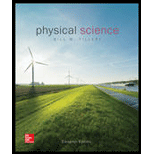
Physical Science
11th Edition
ISBN: 9780077862626
Author: Bill Tillery, Stephanie J. Slater, Timothy F. Slater
Publisher: McGraw-Hill Education
expand_more
expand_more
format_list_bulleted
Concept explainers
Textbook Question
Chapter 7, Problem 46AC
The condition of farsightedness, or hyperopia, can be corrected with a (an)
a. concave lens.
b. convex lens.
c. eyepiece lens.
d. combination of convex and concave lenses.
Expert Solution & Answer
Want to see the full answer?
Check out a sample textbook solution
Chapter 7 Solutions
Physical Science
Ch. 7 - 1. Which of the following is luminous?
a. Moon
b....Ch. 7 - Prob. 2ACCh. 7 - Prob. 3ACCh. 7 - Prob. 4ACCh. 7 - 5. Light interacts with matter by which...Ch. 7 - Prob. 6ACCh. 7 - 7. Light is said to travel in straight-line paths,...Ch. 7 - 8. The image you see in a mirror is
a. a real...Ch. 7 - Prob. 9ACCh. 7 - Prob. 10AC
Ch. 7 - Prob. 11ACCh. 7 - 12. The component colors of sunlight were first...Ch. 7 - 13. The color order of longer-wavelength to...Ch. 7 - Prob. 14ACCh. 7 - 15. Polarization of light is best explained by...Ch. 7 - 16. Light in one plane is transmitted and light in...Ch. 7 - Prob. 17ACCh. 7 - Prob. 18ACCh. 7 - Prob. 19ACCh. 7 - Prob. 20ACCh. 7 - 21. Fiber optics transmits information using
a....Ch. 7 - 22. A luminous object
a. reflects a dim blue-green...Ch. 7 - Prob. 23ACCh. 7 - 24. The difference in the light emitted from a...Ch. 7 - Prob. 25ACCh. 7 - 26. An image that is not produced by light rays...Ch. 7 - Prob. 27ACCh. 7 - Prob. 28ACCh. 7 - 29. Which of the following can only be explained...Ch. 7 - 30. The polarization behavior of light is best...Ch. 7 - Prob. 31ACCh. 7 - Prob. 32ACCh. 7 - Prob. 33ACCh. 7 - Prob. 34ACCh. 7 - 35. The electromagnetic wave model defines an...Ch. 7 - 36. Of the following, the electromagnetic wave...Ch. 7 - 37. Of the following, the electromagnetic wave...Ch. 7 - Prob. 38ACCh. 7 - 39. Green grass absorbs
a. yellow light.
b. only...Ch. 7 - Prob. 40ACCh. 7 - Prob. 41ACCh. 7 - Prob. 42ACCh. 7 - Prob. 43ACCh. 7 - Prob. 44ACCh. 7 - 45. Polaroid sunglasses work best in eliminating...Ch. 7 - 46. The condition of farsightedness, or hyperopia,...Ch. 7 - Prob. 47ACCh. 7 - Prob. 48ACCh. 7 - 49. The special theory of relativity is
a. a new...Ch. 7 - Prob. 50ACCh. 7 - 51. Comparing measurements made on the ground to...Ch. 7 - 1. What determines if an electromagnetic wave...Ch. 7 - 2. What model of light does the polarization of...Ch. 7 - Prob. 3QFTCh. 7 - 4. What model of light is supported by the...Ch. 7 - Prob. 5QFTCh. 7 - Prob. 6QFTCh. 7 - 7. When does total internal reflection occur? Why...Ch. 7 - 8. Why does a highway sometimes appear wet on a...Ch. 7 - 9. How can you tell if a pair of sunglasses is...Ch. 7 - 10. What conditions are necessary for two light...Ch. 7 - 11. Explain why the intensity of reflected light...Ch. 7 - Prob. 12QFTCh. 7 - Prob. 13QFTCh. 7 - Prob. 14QFTCh. 7 - 1. Clarify the distinction between light...Ch. 7 - 2. Describe how you would use questions alone to...Ch. 7 - 3. Use a dialogue as you “think aloud."...Ch. 7 - 4. Compare and contrast the path of light through...Ch. 7 - 5. Analyze how the equation E = hf could mean that...Ch. 7 - 6. How are visible light and a radio wave...Ch. 7 - Prob. 1PEBCh. 7 - Prob. 2PEBCh. 7 - 3. How many minutes are required for a radio...Ch. 7 - 4. An incident light ray strikes a mirror with an...Ch. 7 - 5. The speed of light through a transparent...Ch. 7 - Prob. 6PEBCh. 7 - Prob. 7PEBCh. 7 - 8. The wavelength of light from a monochromatic...Ch. 7 - Prob. 9PEBCh. 7 - 10. At what rate must electrons in a wire vibrate...Ch. 7 - Prob. 11PEBCh. 7 - Prob. 12PEBCh. 7 - Prob. 13PEBCh. 7 - Prob. 14PEBCh. 7 - Prob. 15PEB
Knowledge Booster
Learn more about
Need a deep-dive on the concept behind this application? Look no further. Learn more about this topic, physics and related others by exploring similar questions and additional content below.Similar questions
- . A small object is placed to the left of a convex lens and on its optical axis. The object is 30 cm from the lens, which has a focal length of 10 cm. Determine the location of the image formed by the lens. Describe the image.arrow_forwardA dentist uses a spherical mirror to examine a tooth. The tooth is 1.00 cm in front of the mirror, and the image is formed 10.0 cm behind the mirror. Determine (a) the mirrors radius of curvature and (b) the magnification of the image.arrow_forwardA particular nearsighted patient cant see objects clearly beyond 15.0 cm from their eye. Determine (a) the lens power required to correct the patients vision and (b) the type of lens required (converging or diverging). Neglect the distance between the eye and the corrective lens.arrow_forward
- In a reflecting telescope the objective is a concave mirror of radius of curvature 2m and an eyepiece is a convex lens of focal length 5 cm. Find the apparent size of a 25-m tree at a distance of 10 km that you would perceive when looking through the telescope.arrow_forwardSome telephoto cameras use a mirror rather than a lens. What radius of curvature mirror is needed to replace a 800 mm focal length telephoto lens?arrow_forwardConsider a spherical concave mirror with the object located to the left of the mirror beyond the focal point. Using ray diagrams, show that the image moves to the left as the object approaches the focal point.arrow_forward
- Under what circumstances will an image be located at the local point of a lens or mirror?arrow_forwardConstruct ray diagrams to determine whether each of the following statement is true (T) or false (F). (a) For an object at a concave mirrors center of curvature, the image is real and inverted. (b) As an object approaches the focal point of a concave mirror, the image size shrinks to zero. (c) For an object in front of a convex mirror, the image is always virtual and upright.arrow_forward
arrow_back_ios
arrow_forward_ios
Recommended textbooks for you
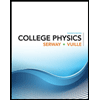 College PhysicsPhysicsISBN:9781305952300Author:Raymond A. Serway, Chris VuillePublisher:Cengage Learning
College PhysicsPhysicsISBN:9781305952300Author:Raymond A. Serway, Chris VuillePublisher:Cengage Learning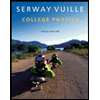 College PhysicsPhysicsISBN:9781285737027Author:Raymond A. Serway, Chris VuillePublisher:Cengage Learning
College PhysicsPhysicsISBN:9781285737027Author:Raymond A. Serway, Chris VuillePublisher:Cengage Learning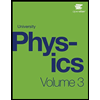 University Physics Volume 3PhysicsISBN:9781938168185Author:William Moebs, Jeff SannyPublisher:OpenStax
University Physics Volume 3PhysicsISBN:9781938168185Author:William Moebs, Jeff SannyPublisher:OpenStax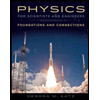 Physics for Scientists and Engineers: Foundations...PhysicsISBN:9781133939146Author:Katz, Debora M.Publisher:Cengage Learning
Physics for Scientists and Engineers: Foundations...PhysicsISBN:9781133939146Author:Katz, Debora M.Publisher:Cengage Learning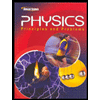 Glencoe Physics: Principles and Problems, Student...PhysicsISBN:9780078807213Author:Paul W. ZitzewitzPublisher:Glencoe/McGraw-Hill
Glencoe Physics: Principles and Problems, Student...PhysicsISBN:9780078807213Author:Paul W. ZitzewitzPublisher:Glencoe/McGraw-Hill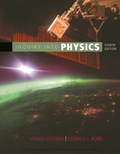

College Physics
Physics
ISBN:9781305952300
Author:Raymond A. Serway, Chris Vuille
Publisher:Cengage Learning

College Physics
Physics
ISBN:9781285737027
Author:Raymond A. Serway, Chris Vuille
Publisher:Cengage Learning

University Physics Volume 3
Physics
ISBN:9781938168185
Author:William Moebs, Jeff Sanny
Publisher:OpenStax

Physics for Scientists and Engineers: Foundations...
Physics
ISBN:9781133939146
Author:Katz, Debora M.
Publisher:Cengage Learning

Glencoe Physics: Principles and Problems, Student...
Physics
ISBN:9780078807213
Author:Paul W. Zitzewitz
Publisher:Glencoe/McGraw-Hill

Convex and Concave Lenses; Author: Manocha Academy;https://www.youtube.com/watch?v=CJ6aB5ULqa0;License: Standard YouTube License, CC-BY